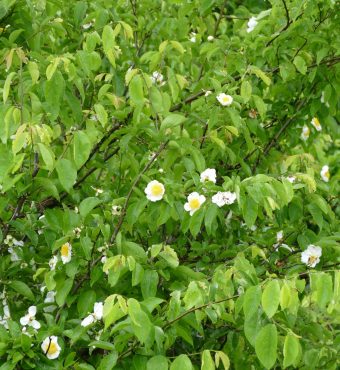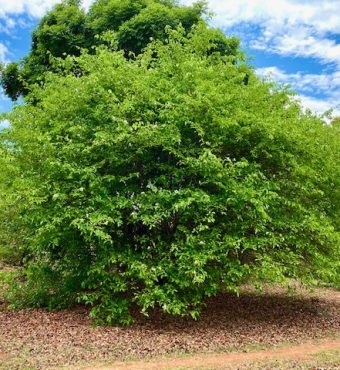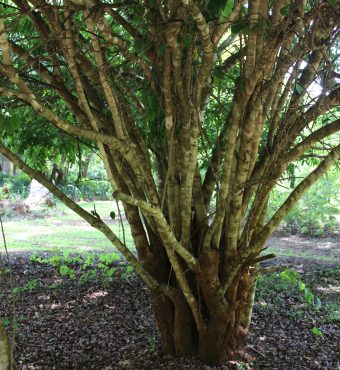


Botanical Name: Oncoba spinosa Forssk.
Common Name: Snuff box Tree, African Dog Rose, Fried Egg Bush
Plant Family: Flacourtiaceae
Origin: Africa
References: Coates Palgrave p.749, Joffe p.35, Kirstenboch series p.246. S.A. No. 492, Zimb. No. 726
Description: Semi- deciduous shrub, naturally occurring on the fringes of riverine forest. Large upright spiny shrub, with glossy dark leaves. Large white flowers with a mass of yellow stamens. The seed is spherical red to brown, becoming brittle when dry.
Features of Particular Interest: Flowers in December, large white petals, surrounding a mass of golden stamens (hence its name Fried Egg Bush). O. spinosa is very showy. Fruits resemble small apples turning blush red as they mature, turning hard. Leaves blush pink in spring.
Height and Spread: 5m x 3m, occasionally to 8m high. Spread up to 6m.
Periods of Interest:
Leaf: September to June.
Flowering: November to February.
Fruiting: January to August.
Cultivation
Soil and Moisture: O. spinosa requires water as it becomes established but not after 2 – 3 years. It is hardy but prefers frost-free areas, but will tolerate low rainfall and drought.
Aspect: Plant in full sun.
Hardiness: Very hardy.
Maintenance and Pruning: Grows about 60cm per annum and needs pruning if used in shrubbery.
Propagation: Grows easily from seed sown in September, or from cuttings.
Problems and Drawbacks: Can get straggly and self-seed.
Use and Associated Planting: Specimen plant. If planted close together O. spinosa makes a good thorny barrier. Also useful in an informal shrub border or at the edge of a pond or stream.
Notes: O. spinosa attracts butterflies. The seed pods are used as snuff boxes or ankle rattles for traditional dancers. Giraffe enjoy the fruit.
